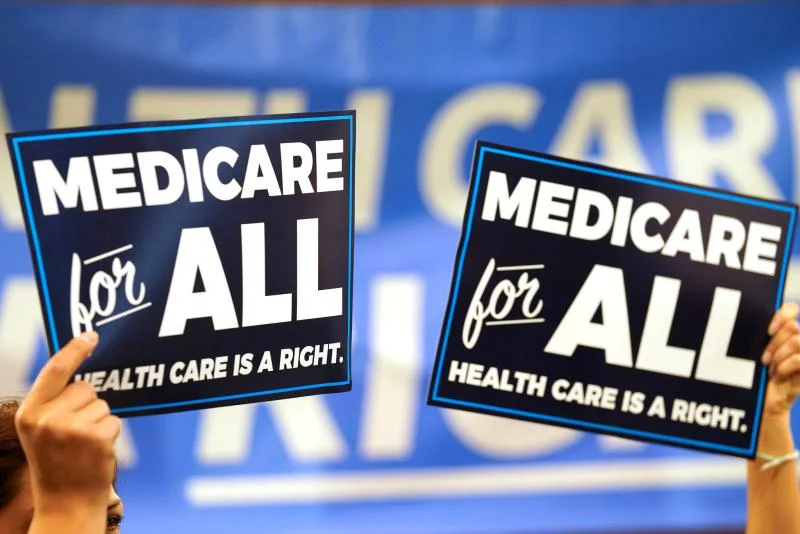Medicare and Medicaid are government programs established in 1965 to assist Americans in affording healthcare, but they serve distinct populations and function differently. Medicare primarily serves individuals over 65, regardless of their income, and some younger individuals with specific disabilities or end-stage renal disease. It is a federal program, and its coverage is uniform throughout the United States. Part A is for hospital insurance, Part B is for medical insurance, Part C (Medicare Advantage) is for private companies’ bundled plans, and Part D is for prescription medications.
Medicaid, on the other hand, serves all ages of low-income individuals and families. As federal and state administrations jointly fund it, its eligibility requirements and benefits can vary significantly between states. Medicaid typically encompasses a broader spectrum of healthcare services than Medicare, frequently including long-term care services. While both programs are essential for many Americans, there are significant differences in the populations they serve (older versus lower-income), their administration (federal versus federal-state), and their coverage. It’s also important to note that some individuals may qualify for both programs, a phenomenon known as dual eligibility.
What is Medicare?
Medicare is a health insurance program run by the federal government in the United States. It began in 1965. It mainly covers people 65 and older, but some younger people with certain disabilities and those with end-stage renal disease (ESRD) are also covered.
Medicare is made up of several parts that offer different types of coverage: Part A covers hospital stays, care in a skilled nursing center, hospice care, and some home health care. Part B covers a variety of doctor’s services, walk-in clinics, medical supplies, and preventative services. Part C, also called Medicare Advantage, is an alternative to traditional Medicare (Parts A and B). It is given by private companies that Medicare has approved. It usually includes support for prescription drugs and extra services like eye, dental, and hearing care. Part D covers the cost of prescription drugs and is also offered by private insurance companies.
Medicare covers a lot of health care, but it’s not entirely free. Beneficiaries must pay premiums, fees, and copayments or coinsurance. The exact costs depend on the care the person gets, how much money they have, and which Medicare plan they choose. Medicare is an essential part of how millions of Americans get health care.
What is Medicaid?
Medicaid is a federal and state program in the United States that helps low-income adults, children, pregnant women, older adults, and people with disabilities get health care benefits. Medicaid, which started in 1965, is an important part of America’s safety net for health care. The federal government pays for Medicare, and is the same in every state. Medicaid, on the other hand, is paid for by both the federal and state governments and is run differently in each state. So, the rules for who can get service and what they cover can be very different. But federal law says that all states must offer certain benefits, and it also lets states provide benefits that aren’t required.
Mandatory benefits include, among other things, hospital services for both inpatients and outpatients, doctor services, testing and X-ray services, and home health services. Prescription drugs, physical therapy, or dental care could be added as extra perks. Also, it’s essential to know that Medicaid often pays for long-term care services, while Medicare usually doesn’t. Medicaid is a health insurance program that provides low- or no-cost care to those who qualify. However, recipients may be asked to make small contributions (such as copayments). Millions of people in the United States depend on Medicaid for their health care and long-term care needs.
Difference Between Medicare and Medicaid
Medicare is a federal health insurance program for low- and middle-income seniors and those with disabilities under 65. It’s uniform throughout the United States and has different service sections. On the other hand, Medicaid is a federal and state-run health insurance program for low-income families and individuals. This includes some low-income adults, children, pregnant women, the elderly, and those with disabilities. Long-term care services are commonly included, and coverage can be more extensive than Medicare, depending on the state. Income and family size considerations determine eligibility. We’ve compared Medicare and Medicaid and highlighted the key differences below.
Population Served
Medicaid assists low-income individuals and families, including children, pregnant women, elderly adults, and people with disabilities, while Medicare typically covers persons aged 65 and older and younger people with certain disabilities.
Administration
Medicare is a government program that operates on a nationwide scale. Conversely, Medicaid is a federal-state partnership that gives individual states considerable leeway in how they implement and manage the program.
Funding
The federal government pays for Medicare, while the federal and state governments pay for Medicaid.
Standardization
Medicare benefits are the same across the country. However, Medicaid’s eligibility requirements, benefits, and reimbursement rates can differ widely from one state to the next.
Coverage
Medicaid covers a broader range of services than Medicare, especially regarding long-term care and preventative medicine.
Cost to Beneficiaries
Beneficiaries of the Medicare program often contribute to the total cost through deductibles and copayments. Medicaid recipients typically pay only a small copayment or deductible for approved medical treatments.
Eligibility
To qualify for Medicare, you must typically be 65 or older or disabled. The income threshold at which one becomes eligible for Medicaid varies from state to state.
Drug Coverage
Medicare Part D is a supplemental insurance program that covers the cost of prescription drugs. Medicaid, on the other hand, frequently covers medication at little or no cost to the recipient.







